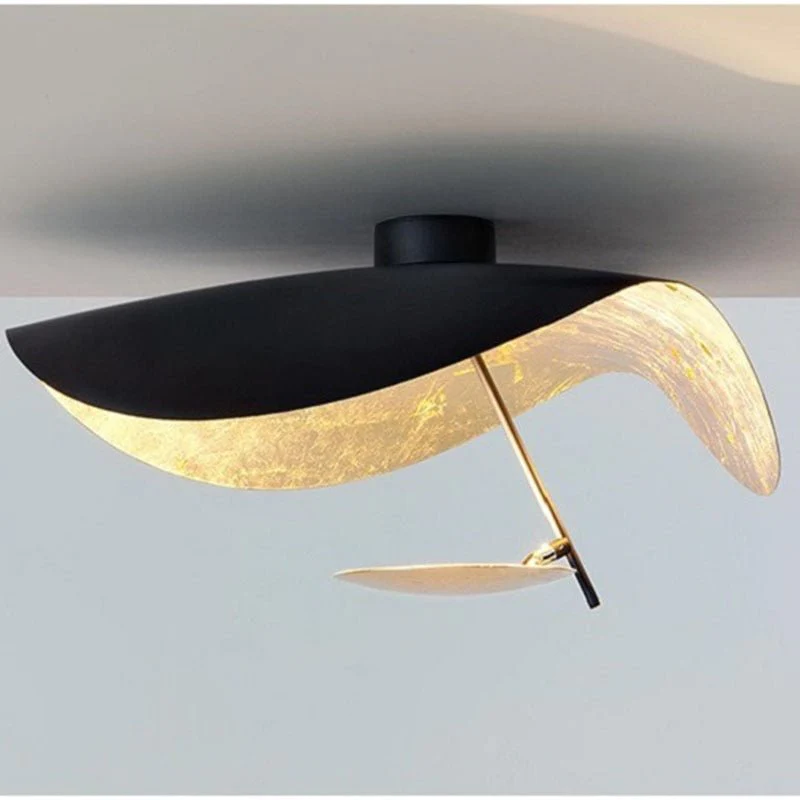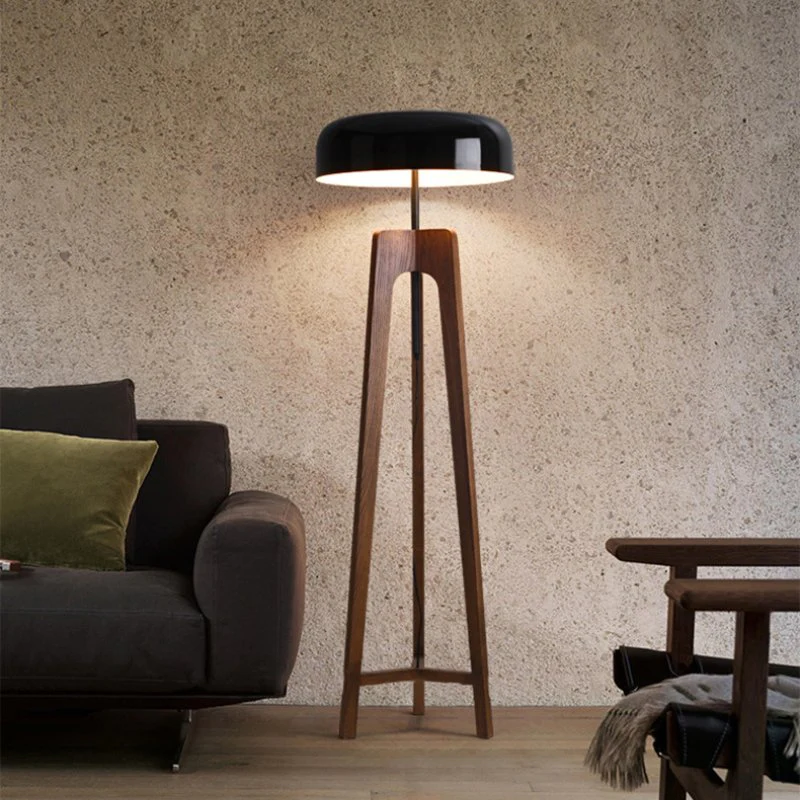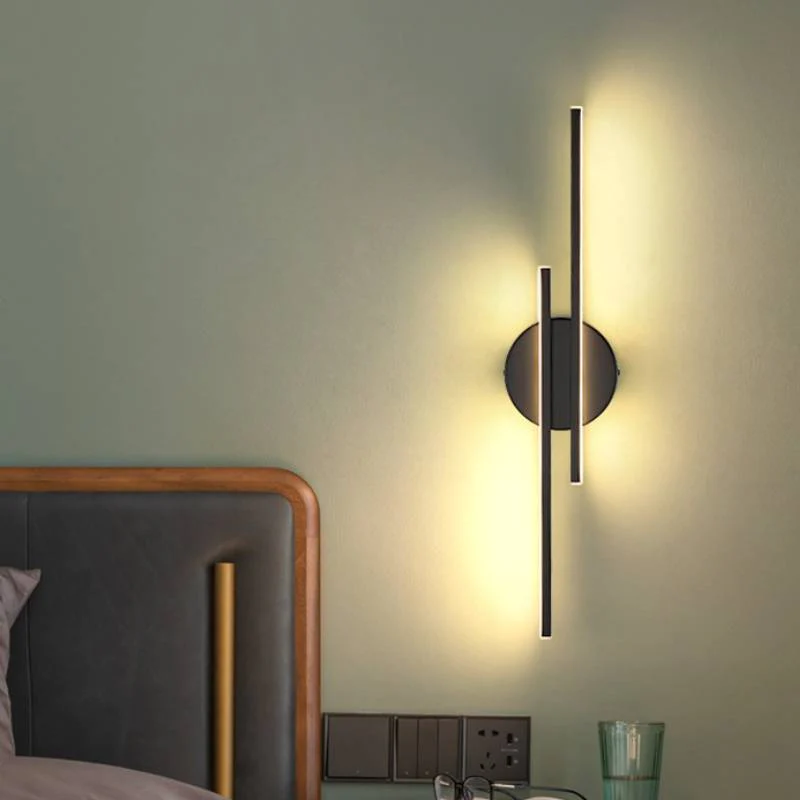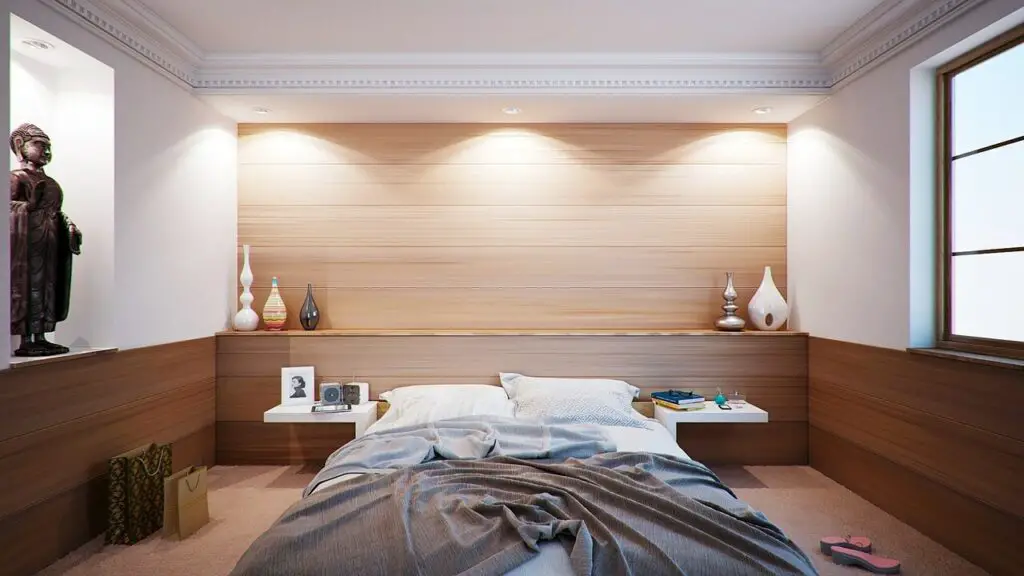This post contains affiliate links. If you make a purchase through these links, I might make a small commission at no extra cost to you. In fact, you get a 10% discount using the code “ZACH”. Thanks for the support and hope you enjoy the read!
Last night I was in bed and there was something about my bedroom lighting that made me totally sleepy. So I decided to write an article explaining how you can create a perfect lighting scheme that will not keep you up at night.

By that, I basically mean convenient lighting that is also easy on the eyes. Let’s see all the different things you can do to achieve the best bedroom lighting for sleeping that helps you unwind at night.
Choose Your Fixtures
There are three main types of lighting, each one served by different fixtures:
- Ambient
- Task
- Accent
Ambient light
Ambient light is the general light used in all rooms when there is no daylight. Think of your main light source in a room – that is your ambient light. The main fixtures for ambient light in the bedroom are:
- Chandeliers
- Pendants
- Cove lighting
- Flush mount lights
- Sconces
- Ceiling fans
Pro Tip: To achieve the best bedroom lighting for sleeping, make sure you have easy access from your bed to the switch of your ambient light fixture.
My personal favorite choices for ambient light in the bedroom are chandeliers…
…peculiar pendants…
…and unique flush mount lights!
Task lighting
Task lighting is the light used for tasks, such as reading a book or putting on makeup. Usually, the main task lighting you will need in your bedroom is for your bedside table. The main fixtures for task lighting in the bedroom are:
- Table lamps
- Floor lamps
- Sconces
- Swing-arm sconces
My favorite choices are table lamps…
…floor lamps…
…and transitional sconces!
Pro Tip: Be careful with floor lamps – sometimes the switch is on the wire (meaning on the floor) which isn’t ideal reaching for it when you’re trying to sleep.
Accent lighting
The bedroom does not really need accent lighting, but if you wanna give it a go, you can use:
- Picture lights
- Directional can lights (e.g., plant uplighters)
- Wall light art
- Wall washers (also for ambient light)
Smartly placed accent lighting can help you sleep better, especially if you like to sleep with some lights on.
Using an upward-pointing can light behind a plant is one of my favorite ways to give some extra dimension to your plants and make them more dramatic. This type of light can stay on all night.
Decide Your Fixture Placement
Sometimes you might be limited by your home’s wiring or outlets. Worry not, there are still ways around it. But first, let’s suppose you are not restricted in any way.
Ambient light
The best placement for ambient light (in the case of chandeliers, pendants & co.) is in the center above the bed. This gives a nice glow to the bed and is a good position to illuminate your entire bedroom.
Sconces should be placed on either side of the bed and anywhere else that feels appropriate.
If the light switch is close to the bed, you can get hardwired sconces. If not, go for sconces with an included switch next to the lamp.
Pro Tip: Wall sconces follow the 6-foot rule, which means there should be a distance of about 6 feet (180 cm) between two sconces. However, this mostly applies to sconces in sequence, such as in hallways or stairs. For the bedroom, even 4 feet (120 cm) is okay, as this depends mostly on their functionality and the area around them.
Task lighting
You should always make sure to light your bedside table properly. Read the previous guide and use a table lamp, wall sconce, or swing-arm sconce.
Furthermore, you can install LED strips inside your closet and have them switch on automatically whenever you open the door. This way, you have one less light source to worry about when going to bed!
If you have another table e.g., for putting on makeup or an area where you iron your clothes, you can light those up with pendants, track lighting, or a big arching floor lamp.
Accent lighting
The best tip I have to give for accent lighting is to use motion-activate LED strips wherever you can (e.g., under the bed, in the closet) and install some light wall art.
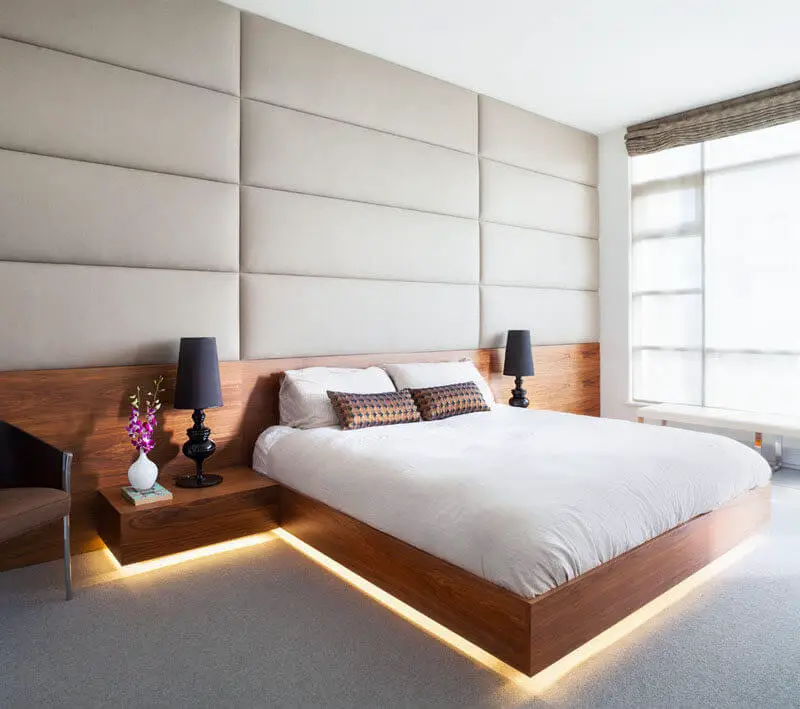
This is very critical when trying to achieve the ideal bedroom lighting for sleeping. Not only does it give an awesome feeling to your bedroom, it’s also very practical, which is not common for accent lighting.
Pro Tip: Install motion detectors so that your bed lights up whenever you get on or off. Late night trips to the kitchen or bathroom become SO much easier when you don’t need to worry about blinding light. Plus, no more toe stubbing!
Calculate Your Lumens
Next, you need to determine how much brightness you need in your bedroom. Thankfully, you can read this guide to figure out your exact lumen needs.
Briefly, ambient light should be about 15 lumens per square foot (or 180 lumens per square meter) of your bedroom. Task lighting, such as the lamp on your bedside table, should be about 35 lumens per square foot (or 380 lumens per square meter) of your task area. LED strips should be 200-500 lumens per foot (600-1600 lumens per meter).
However, these lumens are too high when trying to sleep. This is why the most important advice I can give for the best bedroom lighting for sleeping is to connect as many of your fixtures as you can to dimmers. This applies to your entire home but especially to your bedroom.
So keep most of your lamps on dimmers and dim them to your convenience shortly before bedtime.
Pick The Right Bulbs
Although many of the fixtures might come with the bulb included, it is important to know the specs of the bulb in general. For the best bedroom lighting for sleeping, the most important specs are lumens, which we talked about already, and color temperature.
Color Temperature
Color temperature measures how yellowish or white/blueish the light is and it’s measured on the Kelvin scale, with up to 3000 K being warmer and more than 4000 K being cooler.
Cooler light is better for focus and productivity, while warmer light is ideal for relaxation. I would suggest not exceeding 3500 K in your bedroom, with a sweet spot at around 2700 K.
However, you can also use LED bulbs with adjustable color temperature (or even color if you’re feeling funky!).
Wrapping up – 6 Top Tips For Bedroom Lighting For Sleeping
For the best bedroom lighting for sleeping, ensure the following:
- Choose convenient fixtures
- Be mindful of where the switches are
- Automate as much as you can with motion-activated LEDs
- Use dimmable bulbs
- Carefully place accent lights that you can leave on at night
- Do not exceed 3500 Kelvin (or even 3000!)
There you have it! Enjoy a perfectly lit bedroom for relaxation and get ready for all the zzz!






